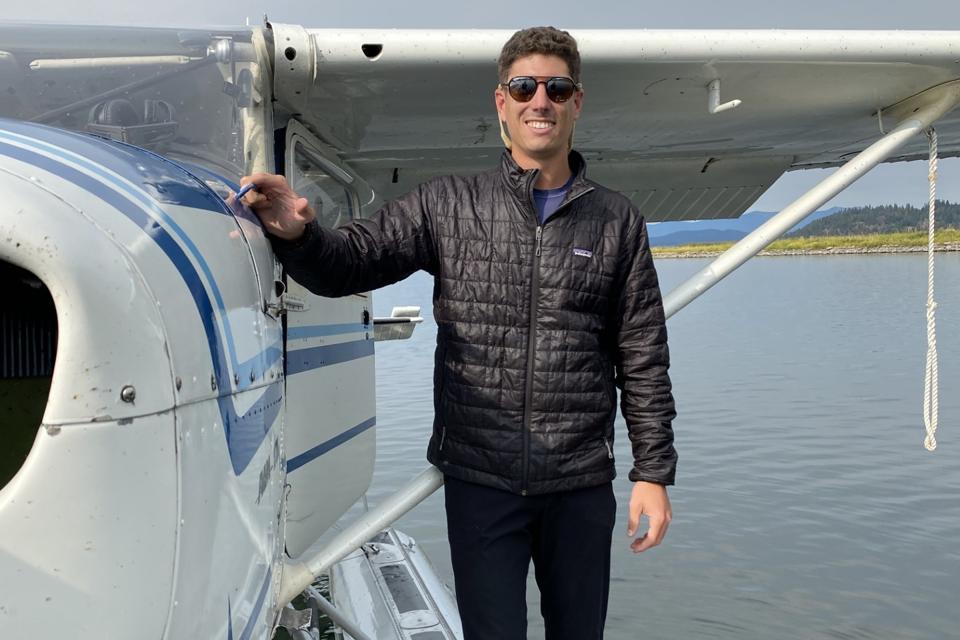Fear of flying is on the rise—despite a 2025 Associated Press and NORC Center for Public Affairs poll showing that most Americans still view air travel as safe. Aviophobia, or an intense fear of flying, is a clinically recognized anxiety disorder that may affect up to 40% of people in industrialized countries. Pilots and doctors are more equipped to ease fear of flying.
I know this condition from personal experience. A few years ago, a New England storm canceled scores of flights—yet my small plane from Boston to New York was cleared for takeoff. The turbulence was immediate and intense. Attendants remained buckled into their seats, passengers exchanged anxious glances, and I heard three people nearby vomiting. We were warned of a rough landing—and it was. When the plane touched down, it bounced twice, then suddenly pulled back into the air to circle for better weather before landing again. I was startled. I wondered, Am we going to die?
That experience stuck with me. I began searching for tools to better understand and manage the fear that took hold that day.
How Education from Pilots Helps Reduce Fear of Flying
I discovered Dial A Pilot, a service founded by pilot Kyle Koukol that focuses on passenger anxiety. “Aviation misinformation is everywhere. Accurate, human-centered explanations are hard to find. If people could simply talk to a real airline pilot without judgment, pressure, or jargon, it could shift how they relate to flying entirely” says Koukol.
Their business model is simple: passengers can book a call with a U.S.-based commercial pilot, active or retired, to discuss a recent flight, safety concerns, or even aviation news.
Koukol notes a spike in calls whenever incidents make headlines. While they never speculate on specific events, he says the goal is to “make sense of what people are hearing, understand how investigations work, and regain trust in the system.” Often, that’s enough to shift someone from panic to perspective.
Dial A Pilot also has a social media presence that covers the mechanics of flight education. What is turbulence? What does it mean when the flight attendants are seated during turbulence? What does a maintenance delay mean? Koukol affirms that aviation is a “well-oiled machine,” but says passengers often lack insight into what they’re seeing, hearing, or feeling.
I thought back to my own flight scare, which led to a fear of flying that took months to resolve. I believe that if I had spoken with a pilot in the hours after landing, it might have changed the psychological impact entirely.
Lisa Calineau, a pilot who answers Dial A Pilot calls, says many customers trace their fear of flying back to “having children, a specific bad flight, or repeated exposure to news that makes flying seem dangerous.”
“I like to focus on the rigorous training pilots undergo—from their very first lesson to the continuous evaluations throughout their careers,” says Calineau. “Most people know flying is safer than driving, but hearing about a pilot’s personal training often puts them at ease.” By the end of a call, customers understand both the high standards pilots meet and the many safety layers built into every flight—from maintenance to crew protocols.
How Clinical Tools Are Used to Treat Fear of Flying
A 2024 study in the Journal of Clinical Medicine found that individuals with high flight anxiety also scored significantly higher on assessments of trauma and limbic system irritability—a neurological marker tied to symptoms like dissociation, sensory issues, and even seizure-like episodes. These findings support the need to treat flight anxiety as a legitimate mental health concern—not just a passing fear.
Dr. Christy Gibson, a physician, trauma therapist, and author of The Modern Trauma Toolkit, offers evidence-based strategies to help manage fear of flying. “Ahead of a flight is a great time to work on best-case scenario thinking,” she says. “Our brains are wired to focus on the negative—that’s adaptive. But in the case of flight anxiety, it’s counterproductive. Because it’s pretty unlikely that anything will happen. And if it does, thinking about it ahead of time won’t change a thing.”
She encourages patients to create a multisensory visualization of a positive flight: “Imagine a quiet compartment, a comfortable seat, the lemony smell of your soda water. Imagine arriving refreshed with your bag coming out just as you do.”
Before a flight, Gibson recommends engaging the parasympathetic nervous system, the body’s calming system. “Lengthen your exhale,” she advises. “Humming or singing works well, because it also distracts your mind. Sip small amounts of water. Eat healthy snacks.”
Once you’re in the air, distraction becomes key. Our amygdalas, the two almond-shaped structures in the brain, help process emotions like fear and anxiety. “If they’ve decided you’re in danger, thinking clearly becomes very difficult,” says Gibson. Engaging your brain with cognitive tasks, like puzzles or audiobooks, can help quiet the amygdala’s alarm, reducing feelings of fear or anxiety.
She also uses techniques from Havening Techniques, where calming physical touch can combine with a thinking brain to cause distraction. “You might try to name all the foods or animals that begin with the letter A, then move on to B, and so forth. You might imagine a garden where each row has a different color flower.” While thinking, you can gently brush a finger across the palms of your hands, upper shoulders or face.
No matter where you are going, Calineau reminds us: “It’s okay to be scared. But you’re not in a dangerous situation.” She often tells callers that turbulence is “just bumps in the road. It’s temporary. And you are in safe hands.”

